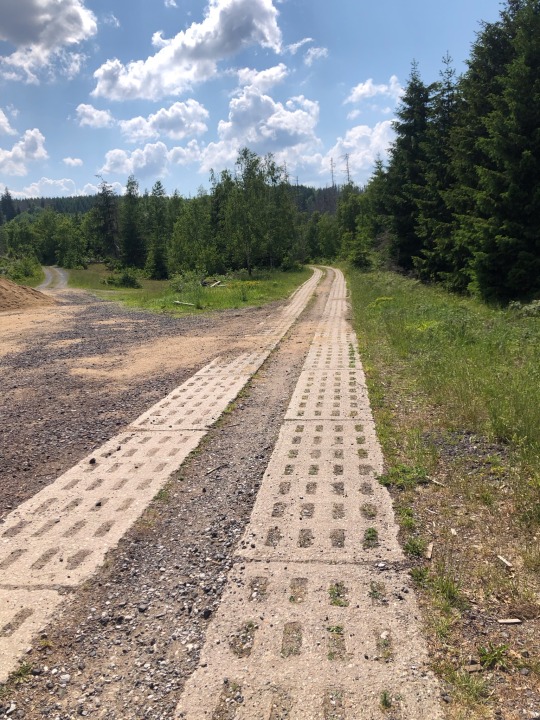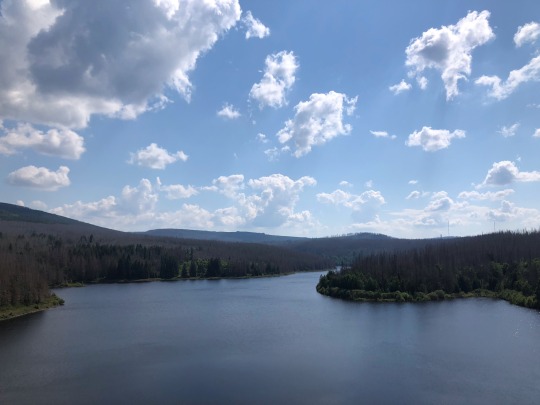#Rathenau
Text
Wehe denen, die aus der Geschichte nichts lernen.
Woe to those who learn nothing from history.
Walther Rathenau (1867 – 1922), German industrialist, writer, and politician
46 notes
·
View notes
Text

"Cet homme aux multiples occupations avait toujours du temps. Je l’ai vu durant les journées les plus dures de la guerre comme immédiatement avant la conférence de Gênes, et peu de jours avant son assassinat j’ai roulé avec lui dans la même automobile où il a été tué, en empruntant la même rue. Le programme de sa journée était toujours fixé à la minute près, et il pouvait cependant passer sans peine d’un sujet à l’autre à chaque instant, parce que son cerveau était toujours prêt, instrument d’une précision et d’une rapidité que je n’ai jamais observées chez un autre homme. Ses paroles coulaient comme s’il avait lu un texte écrit sur une feuille invisible et il donnait cependant à chacune de ses phrases une forme si accomplie et si claire que sa conversation, sténographiée, aurait constitué un exposé parfaitement propre à être imprimé tel quel."
Stefan Zweig, Le Monde d’hier, trad. Serge Niémetz, 1944.
5 notes
·
View notes
Text
It can be said that half of the work of the civilized world is dedicated to the production of garbage and that half of its income is used to pay for it.
0 notes
Text
Rathenau-7k - "The Chariot of the First Aces"

Role: Early Scout
Served With: Macchi, UWF & Allies
First Flight: 1581
Strengths: Agile, High Boost
Weaknesses: Underarmed, Fragile
Inspiration: Morane-Saulnier L (1914)
Description:
Though there are many historians who dispute it, the Rathenau-7a is the first combat scout, as defined as a single-seat plane with fixed forward weapons designed to attack other aircraft. It achieved this by mounting deflector plates on the propeller of an unarmed Rathenau-7 observer. It was soon outclassed by Gotha’s Arntwerke c.10.
The design of the engine mount, using a looped wire cage, made retrofitting an interrupter gear impractical. Before large scale revisions could correct this issue, the much better Rathenau-9 came into operation, using overwing guns and later interrupter gears themselves.
The largest operators of the Rathenau-7 were the various principalities of Lohner fighting alongside the UWF, and many of them remain in the hands of militias, usually upgraded to Schreiber B.IX engines from downed Singvogels.
14 notes
·
View notes
Text

Wat? Porträt Walther Rathenau (1907) door Edvard Munch
Waar? Berlinische Galerie, Berlijn
Wanneer? 9 augustus 2024
Dankzij een schandaal werd de jonge Noorse kunstenaar Edvard Munch (1863-1944) op slag beroemd. Zijn tentoonstelling in de Verein Berliner Künstler werd al na een paar dagen gesloten omdat conservatieve leden tegen de nieuwlichterij hadden geprotesteerd. Met de ‘Affaire Munch’ begint in de Duitse kunst de moderne tijd. Münch was verre van terneergeslagen door de kwestie. Hij was blij met de aandacht die zijn werk kreeg en trok naar de Duitse hoofdstad, waar hij tot 1907 regelmatig langere tijd werkte.
Eén van de eerste verzamelaars van werk van Munch was de industrieel Walther Rathenau (1867-1922). Rathenau zou later minister van buitenlandse zaken worden van de Weimar Republiek en in die hoedanigheid worden vermoord. Als reactie op zijn portret gaf Rathenau als commentaar: “Dat heb je er nou van als je je door een groot kunstenaar laat schilderen. Je gaat er meer op lijken dan je op jezelf doet.”
7 notes
·
View notes
Text

“Yesterday, the manuscript of Crowds and Power went off to Hamburg.
In 1925, thirty-four years ago, I had my first thought about a book on the crowd. But the real seed for it came even earlier: a workers' demonstration in Frankfurt for the death of Rathenau; I was seventeen.
However I look at it, my entire adult life was filled with this book; but since settling in England, that is, for the past twenty years, I have worked on scarcely anything else, albeit with tragic interruptions.
Was it worth all this effort? Have I thereby lost many other works?
What can I say? I had to do what I have done. It was a compulsion that I will never understand.
I spoke about it before much more than the intention for the book existed. I announced it with the greatest claim in order to chain myself harder to it. While everyone who knew me kept driving me to complete it, I did not terminate it even one hour earlier than I thought proper. My best friends lost their faith in me during these years; it took too long, I couldn't blame them.
Now I tell myself that I have succeeded in grabbing this century by the throat.” - Elias Canetti, ‘The Human Province’ (1978) [p. 184, 185]
#canetti#elias canetti#human#province#crowds#power#nobel#nobel prize#auto da fe#books#bookshelf#library
3 notes
·
View notes
Text
Terror as the counterpart of propaganda played a greater role in Nazism than in Communism. The Nazis did not strike at prominent figures as had been done in the earlier wave of political crimes in Germany (the murder of Rathenau and Erzberger); instead, by killing small socialist functionaries or influential members of opposing parties, they attempted to prove to the population the dangers involved in mere membership. This kind of mass terror, which still operated on a comparatively small scale, increased steadily because neither the police nor the courts seriously prosecuted political offenders on the so-called Right. It was valuable as […] ‘power propaganda’: it made clear to the population at large that the power of the Nazis was greater than that of the authorities and that it was safer to be a member of a Nazi paramilitary organization than a loyal Republican. This impression was greatly strengthened by the specific use the Nazis made of their political crimes. They always admitted them publicly, never apologized for ‘excesses of the lower ranks’ – such apologies were used only by Nazi sympathizers – and impressed the population as being very different from the ‘idle talkers’ of other parties.
Hannah Arendt, The Origins of Totalitarianism (Penguin, 1951/2017), pp. 450–1.
3 notes
·
View notes
Text
Seance in Gravity's Rainbow
The most distinctive element of Pynchon’s account of the late-modern moment, and the element that makes it so vital, is its uniting of theological and technological reflection. His work seems to suggest that a properly theological account of late modernity will also be a technological account, and a usefully technological one will also be theological. That Pynchon seeks the union of these two typically divergent perspectives is made quite explicit in a scene from his most famous novel, Gravity’s Rainbow (1973), set primarily during World War II. There he depicts a séance in which a group of Germans from “the corporate Nazi crowd,” makers of armaments, attempt to contact the spirit of Walter Rathenau, who had been foreign minister in the Weimar government until his assassination by a reactionary terrorist group, Organization Consul, in 1922.
Alan Jacobs - The Far Invisible : Thomas Pynchon as America’s Theologian
11 notes
·
View notes
Text
« Dans le domaine politique, les Templiers représentaient l'Universalisme. Nous nous sommes étonné plus haut que le pape ne se soit pas servi de leur puissance contre le nationalisme des princes. René Gilles nous dit qu'ils s'apprêtaient à renverser la monarchie et que Philippe le Bel en aurait eu vent. Il nous montre, en tout cas, des concordances troublantes entre le Procès des Templiers et certains faits de la Révolution de 89, considérés par certains Maçons comme une vengeance de la mort de Jacques de Molay. Un fait est certain, la Franc-Maçonnerie s'est toujours targuée de faire remonter ses origines aux Ordres des Bâtisseurs et des Templiers, et Louis XVI a été enfermé au Temple, dans la tour même où Philippe le Bel était venu s'installer le jour de l'arrestation des Templiers et ce, sur l'ordre des Jacobins alors que l'Assemblée Nationale avait désigné le Luxembourg. D'autres concordances ne sont pas moins frappantes. Il n'est pas niable que le rôle des Sociétés secrètes a toujours été fort important. L'étude de la préparation de la Révolution de 89 en a apporté des preuves éclatantes. Plus près de nous Disraëli disait que le monde n'était pas conduit par ceux qui paraissaient détenir le pouvoir, et Rathenau, ministre allemand, qui fut assassiné entre les deux guerres disait : « Le monde est conduit par vingt personnalités occultes et que je connais ». »
Jean Tenaille - Civilisation Occidentale
6 notes
·
View notes
Text
Rabgiusa
1
Ich habe zwar keine Farm in Afrika, aber eine halbe Wohnung in Sils Maria. Das ist ein ehemaliges Fischerdorf in Graubünden, gehört zur Schweiz und liegt am Inn. In Sils Maria geben die Leute den Häusern keine Nummer, sondern Namen. Das Haus, in dem die Wohnung liegt, heißt Rabgiusa, Chesa Rabgiusa. Rabgiusa ist ein Ort, der oberhalb von Sils Maria liegt und eine Art Mont Ventoux von Sils Maria ist. Das ist zwar kein Berg, zwei Gipfel liegen noch höher, das sind Corvatsch und Furtschellas. Der Ort ist eine Matte und Alm, man könnte ihn Mout' Ventoux nennen. Wie Ventoux so ist dieser Ort äußert windig, windumtosst und daher immer wütend, tosend, rabiat oder rasend, daher hat der Ort einen Namen, wie der Mont Ventoux.
Das Haus wurde in einem Herbst gebaut, den man in Deutschland den deutschen Herbst nennt. Winter 78/79 war das Haus bezugsfertig und eine große Anzahl von Deutschen hatten sich dort eingekauft, um etwas zu haben, in dem Antike nachlebt: Ein Villa vor der Stadt, ein Jagdschloss, eine Eremitage, eine Sommer- oder Winterresidenz, ein Refugium, also Asyl oder Zufluchtsstätte.
2.
Was raste in diesem Haus? Unter anderem Frau Dürr, die schnellste Porschefahrerin von Sils Maria, Mutter dreier kesser, gewandter und bildschöner Töchter, Ehefrau des Nachfolgers von Emil und Walther Rathenau Heinz Dürr, der gerade im Alter von 90 Jahren gestorben ist. Dieter Steinhauer, nicht ganz so schnell rasender, sogenannter Düsenknallanwalt ebenfalls mit Porsche aus Wuppertal, die Rembolds, ein Lehrerehepaar aus Baden-Württemberg, die Weisshaupts - Kesselproduzenten wie die Vissmanns (diesmal aber wirklich mit doppeltem S). Die Gehrings und die Nanns aus Esslingen, aus der gleichen Stadt Renate Pilz die gerade ihren Mann bei einem Flugzeugabsturz verloren hatte und das zum Anlaß nahm, die Firma ihres Mannes zu einem Weltmarktführer für Relais und Sicherungsschalter zu machen; die Fernaus aus Bochum, die beide offensichtlich an der Pommesbude zu sprechen gelernt hatten und das nicht nur zu hohen Kunst entwickelt hatten, sondern damit auch große Reichtümer erlangt hatten; Jürgen Edler, ein porschefahrender Zahnarzt mit leichtem Herzen aus Solingen. Sepp Hort, guter Freund von Franz Josef Strauß und sein Double, der hatte dort auch Quadratmeter, er war vor allem bei MBB in Lohn und Speise. Fast alle aus dem Schwabenland waren bescheiden, gläubig und pietistisch, die aus dem Rheinland fröhliche Nihilisten á lá James Last, die Bayern pragmatisch.
Kurz gesagt: Es wohnten auch Schweizer in dem Haus, aber in weiten Teilen war das eine deutsche Trotzanlage aus den Zeiten des sog. deutschen Herbstes. Das Haus war und ist streng stratifiziert, die Wohnungen im Erdgeschloss waren die billigsten, aber dort kauften sich die Berater, Ärzte und Lehrer ein, die damals noch auf einer Schicht gemeinsam kaufen konnten, also eben Sportlehrer vom Gymnasium, Anwälte und Zahnärzte.
Dort liegt auch die Wohnung, deren Hälfte meine Sorge sein soll, die andere Hälfte soll die Sorge meines Bruders Cajus sein. Vom ersten Stock an fast nur noch Unternehmer, höheres Management und Gesellschafter , wie eben die Familien Dürr, Weisshaupt oder Pilz (Ausnahmen gab es wie Frau Anwältin Steinberg aus Berlin mit einer kleinen Wohnung im ersten Stock).
Die Leute rasten. Dürrs rasten schon bald weiter und verließen nach ca. 12 Jahren das Haus, um neben Diana von Fürstenberg am Suvrettahang zu ziehen, Klassenaufstieg! Danach gab es in der Deutschen Bahn Fürstenbergpils, was alle Trincker und sonstwie Beteiligten eine zeitlang glücklich gemacht hat, bis vermutlich Mehdorn auf Radeberger umstellte, der Mensch muss gestalten und soll es tun.
3.
In den sieben mageren Jahren hätte ich die Hälfte beinahe verkauft, wenn mich nicht mein treuer Beirat Markus Krajewski mit Rat und Direktorin Marietta Auer mit Tat davon abgehalten hätte. Er sagte: spinn' nicht zu doll, mein lieber Freund (er liebt die Wohnung als Museum der BRD), und sie gab Kredit und Job, um das nicht zu tun.
Im Sommer bin ich mit Markus Krajewski zum Dank hoch zu Rabgiusa, wo er lustigerweise gleich und aufgefordert von Thomas Vesting aus Tübingen erzählte, was mich jetzt dazu bringt, mit Thomas Vesting unbedingt einmal ein paar Tage in dieser Wohnung verbringen zu wollen und nach Rabgiusa hochlaufen zu wollen: zum rasenden Dank. Dann ist Marietta Auer dran, aber Schritt für Schritt.
Rasen und Tosen, Wüten kann man als Kulturtechnik verstehen, das geht, denn die Leute tun es und tun einiges dafür, mit dem Rasen und Tosen, mit intensiv flüchtigen Dingen dankbar umgehen zu können. Alle meine Qualifikationsarbeiten habe ich dort geschrieben, jeweils im Sommer rasend schnell. Wer Tipps für hochengadiner Kulturtechniken juristischer oder juridischer Art braucht, darf sich bei mir melden, ich mache zu äußerst fairem Lohn Angebote, die man ablehnen kann, das bin ich dem Erbe schuldig, so verpflichtet Eigentum.
3 notes
·
View notes
Text
Den Tadel der Menschen nahm ich so lange gerne an, bis ich einmal drauf achtete, wen sie loben.
I happily accepted people's criticism until I paid attention to who they were praising.
Walther Rathenau (1867 – 1922), German industrialist, writer, and politician
32 notes
·
View notes
Text






8 juni Via die Lange
Het was een wirwar aan wegen toen ik Wernigerode uitfietste bij de eerste rit van een lang weekend. In het lagere deel van het stadje ging het langs flats bestaande uit zogenaamde 'Plattenbau' nog uit de DDR-tijd, maar wel mooi opgeknapt en al stijgende langs de villa's uit 'Kaiserzeiten'. Hoe hoger ik kwam hoe rustiger het werd. Asfalt ging over in gruis. Zachtjes regende het voor even bij een berg met de mooie naam: Armeleuteberg. Na een lange tijd hoorde ik opeens weer het geluid van gemotoriseerd verkeer, het was een vreemde ervaring. Al snel was het weer gravelen geblazen, af en toe kwam ik nog een fietser tegen en wandelaars, maar naar een tijd niemand meer. Het gravelweggetje blijkt 'Die Lange‘ te heten, en was al in de 10de eeuw de doorgangsroute van koningen en keizers door de Harz. Als ik in het plaatsje Benneckenstein kom is er net een rally van Nederlandse Opel Kadett bestuurders gaande. Ééntje heeft de leeftijd van ver na de laatste productiedatum van de Kadett. Van Friedrichsbrunn naar Thale heb ik bij een behoorlijke afdaling een prachtig uitzicht op de omgeving. Zo'n decor waarbij je je afvraagt of je er echt fietst. Zo mooi!
In het dal kom ik door Heimburg door de Wilhelm-Pieck-Straße…tegenwoordig een zeldzaamheid, ten tijde van de arbeiders- en boerenstaat was dit wel anders. Wilhelm Pieck was de eerste en enige president die de DDR gehad heeft. Een Stalinist van het eerste uur. En net zoals de rechtsextremitisten waar de Nazi's uit voortkwamen, was hij als lid van de communisten in de jaren '20 tegen de Weimarrepublik, want hoe dan ook ze waren tegen de democratie. Op één dag word ik weer getuige van de onderhoudende Duitse geschiedenis, want eerder op de dag kwam ik langs de Walther-Rathenau-Straße, de beroemde joodse minister van Buitenlandse zaken van de Weimarrepublik die vermoord werd. Wiens vader oprichter was van AEG. Een man die zich ingezet heeft voor de democratie. De laatste km‘s gaan gepaard met zwarte wolken, enig onweer en regen, hetgeen de pret niet mocht drukken bij deze prachtige rit.
9 juni Rondom Halberstadt
Verleden jaar vertrok ik vandaag naar Parijs, dat was geweldig, maar bij thuiskomst moest ik echt afkicken. Toen maakte ik meteen aanstalten om naar Rome te fietsen, alleen al om zoiets te plannen is een genoegen. Je bent zwerver of je bent het niet. Vandaag zworf ik door stadjes en dorpjes die lijken het wel lang in een doornroosjeslaap waren en nu eindelijk wakker zijn geschud. De dom van Halberstadt is van verre uit de heuvels tussen de klaprozen al te zien, dan daarna kom ik in Harsleben zowaar door een Strasse des DSF, straat van de Duits Sowjetische Freund/Vriendschap! In Ballenstedt bevindt zich een mooi slot met een park. Het is gesticht door vorst Friedrich von Anstalt. Wonen in een voormalig residentiestadje bleek begin vorige eeuw een aantrekkingskracht te hebben op pensionado‘s en goede burgerij, waardoor er heden ten dage nog veel villa‘s aan te treffen zijn. Het is bovendien de wieg van deze deelstaat Sachsen-ANHALT.
10 juni Graveltour in de Harz
Na eerst een DHL pakket met (vuile) was weggebracht te hebben kon ik starten met een nieuwe onderneming. Bij de begraafplaats verliet ik Wernigerode en de straat die daarbij langzaam omhoog ging heet opmerkelijk genoeg Himmelpforte, maar dat bleek toch op het klooster te slaan dat daar ooit stond. Een paar km verder is een monnikenhut, ooit een trefpunt van passerende geestelijken in de Harz. Hoe verder ik klim, uiteindelijk tot 721 meter hoe minder fraai de omgeving er uitziet, als figurant in een griezelfilm waan ik me, alleen maar kale bomen, het is een verschrikking om te zien. Bij een koel boshuis rust ik lekker uit, het is zaterdag dus ook drukker met vele waaghalzen op de fiets, ik met één tibiaplateaufractuur (in 2010) teveel kijk wel uit en ga lopen als de weg naar beneden alleen maar keien kent. Aan de andere kant is de verscheidenheid aan soorten gravel hier dan ook wel weer mooi. Dicht bij de Eckertalsperre zag ik ze opeens de Streifen…(dikke betonplaten) daar waar ooit het ijzeren gordijn stond en Europa verdeelde. Je kon tot 1990 hier absoluut niet komen, daar het zwaar bewaakt militair gebied was. Het stuwmeer is trouwens aangelegd door krijgsgevangenen in de Tweede Wereldoorlog. Het was vooral van belang voor de drinkwatervoorziening omdat door de komst van de Volkswagenfabrieken in Wolfsburg de bevolking direct ten noorden van de Harz enorm was toegenomen. Voorbij het meer is het heerlijk dalen naar Ilsenburg. Daar tracteer ik mezelf bij een Italiaan op de pasta della cassa, en na zo‘n rit ging het er wel in. Tot aan Wernigerode is het nog een klein stukje. Goed mogelijk dat ik er opweg van Enschede naar Berlijn in juni 2012 ook gefietst heb.
11 juni Van Seesen naar Stadtoldendorf in Niedersachsen
In het voorland van de Harz fiets ik graag, dus dat stond vandaag als slot van dit fietsweekend uiteraard op het programma. Het werd een warme finish met volop zon en een graad of 30. Toch anders dan in mijn planning. Regelmatig had ik gevoel als een slak te rijden. In Wenzen ging ik eens uitblazen en dat deden anderen hier ook tenminste op de Egerländer Musik af te gaan dat een eindje verderop klonk.
Nog een paar flinke klimmen en ik arriveerde in Stadtoldendorf. Het stadje lag op apegapen alleen bij de 'Italiaan' heerste iets bedrijvigheid, ik bestelde er een ijs. De andere gasten, allen aan het accent te horen van Italiaanse orgine waren aan het roddelen over een dorpsgek die iedereen die hem passeerde altijd drie Zwiebeln (uien) aanbood, schijnbaar neemt niemand ze aan als het altijd drie zijn.
2 notes
·
View notes
Text
New Year's Wish: Less speech, more thoughts; less interests, more public spirit; less knowledge, more judgment; Less conflict, more character.
0 notes
Text
Witch Poll Results
And now we've got the Witch polls done, so here's the findings of our very scientific research so far:
Most Smashable Plane: Barely winning out over the Drachen at 72.6% smash (and thus a total of 45 smash votes) is the Living Grove (Farman). People don't seem to like the Witch planes so much, huh?
Least Smashable Plane: The definitive loser is, somehow, the Rathenau-7k at 48% pass (and thus 36 pass votes). People really don't wanna smash the little rotary-powered planes....
Most Popular Plane: Also the Rathenau-7k, actually, at a total of 75 votes!
Least Popular Plane: The Theler Drachen, at 61 votes. Naturally the highest and lowest amount of votes is gonna trend down over time....
Most Average Plane: Overall, the average is 68.7% smash- so the most average plane so far is the Ritter Model F 'Singvogel'- fitting, I suppose, for a jack of all trades. Among the Witch planes only, the average is 65.6% smash and the Braun Model VJ is most average.
(So far, the top 3 most smashable planes are the Markgraf Zerstörer B, the Living Grove (Farman), and the Theler Kobra MD.)
8 notes
·
View notes
Photo

BLIND VISION
Initiated and realized by Matthias Mayer and Maik Schierloh
in cooperation with Treptow-Ateliers e.V.
11.-13.11.2022
Opening: Friday., 11.11., 17:00-22:00
Opening times:
Saturday, 12.11., 15:00-19:00
Sunday, 13.11., 15:00-19:00
Treptow Ateliers in the Rathenau Hallen
Wilhelminenhofstr. 83-85
12459 Berlin-Oberschöneweide
(Entrance left of Lidl supermarket)
-
Anyone who has moved to Berlin in recent decades has played a part in the development of this city. For some, it conveyed an atmosphere of departure (or even "dependency") in an alternative and avant-garde sense; for others, it was merely a projection surface for profane economic interests pushed by global market events. There was never a vision for all. Politicians were merely trying to pick the pearls out of many alternative ideas. For example, the nightlife and the precarious life of artists were included in the marketing of Berlin. This blind vision is now reflected in a place of action. An unrenovated former industrially used hall and other rooms formerly used as offices, which were made available to the artists' community "Treptow-Ateliers" together with their cheaply rented temporary studios as a temporary playground by an investor. The community itself opened the space for third-party projects. The rawness of the historic site, the desire and spontaneity of the alternative users inevitably lead back to the aura of Berlin in the 1980s and 1990s. And of course Berlin still works like that. But the atmosphere is deceptive, the awakening already sits in the neck, like a drug that slowly loses its effect. Because it all ends, and without romanticism. The artists soon have to go back to their nomadic way. Only that they are not nomadic, but originally displaced from their cherished place of work. Their journey is already unique, because they stick together in solidarity in their seemingly hopeless situation. What could become, what could be? Why is it a blind vision?
3 notes
·
View notes






